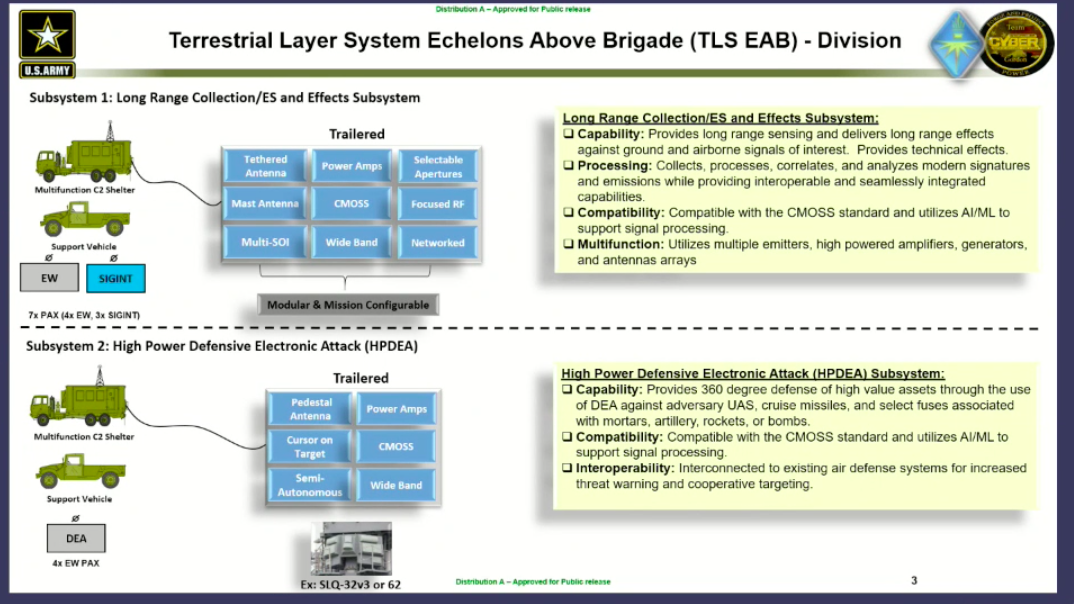WASHINGTON: The Army officially asked industry today to help take a big step towards repairing the Army’s long-neglected EW corps and countering Russian and Chinese jamming – and it’ll have an unexpected missile defense dimension as well.
Boeing and Lockheed are still building rival prototypes for the Army’s next-generation cyber/electronic warfare vehicle, the Terrestrial Layer System set to enter service in 2022. The new system, known as TLS-EAB — will be TLS’s much bigger brother. The service has set a pretty brisk schedule, talking of fielding something by the end of 2023.
The original-flavor TLS, aka TLS-BCT, will fit on an 8×8 Stryker armored vehicle and accompany frontline Brigade Combat Teams. TLS-Echelons Above Brigade will fill a pair of heavy trucks, probably Oshkosh FMTVs, Army officials unveiled today:
- One truck will carry sensors, transmitters, and a tethered drone or aerostat to detect enemy signals, triangulate their locations for artillery and airstrikes, and disrupt them electronically with a combination of jamming, wireless hacking, and deceptive signals. It’ll be crewed by eight soldiers, four specializing in cyber/electronic warfare and four in signals intelligence. There will likely be sub-variants, for example with a division-level system designed to frequently relocate, while a Multi-Domain Task Force might accept a less mobile version with more range and power. But overall, this long-range offensive cyber/EW/SIGINT capability is essentially a supersized version of what the TLS-BCT will do, albeit operating over much greater distances.
- The other truck, however, adds a dimension absent from the brigade-level TLS-BCT: a high-powered but relatively short-ranged defensive EW capability to protect key sites like division, corps, and theater command posts. It’ll be crewed by four electronic warfare soldiers, but there’s no SIGINT on this variant. Instead, it’ll have an “electronic countermeasure point defense suite” – again, using a mix of jamming, wireless hacking, and deceptive signals – to decoy or disable incoming enemy drones, missiles, rockets, and artillery rounds, many of which rely on radar for guidance and fusing.
Because it’s mounted on trucks, TLS-EAB can be a lot bigger and more powerful than the Stryker-mounted TLS-BCT or the drone-mounted jamming/sensing system known as MFEW-Air-Large. But it will share data with those systems, because they’ll be closer to the front line and/or able to fly over obstacles to see distant threats.

